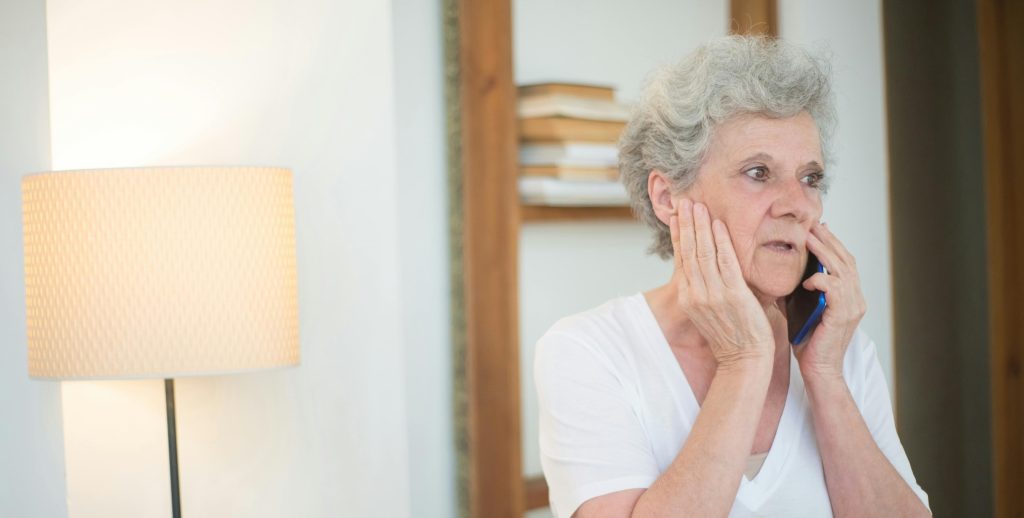5 STIs that older people may overlook, but shouldn’t
When you think about who tends to get STIs, you probably think of young people living foot-loose and fancy-free, dating widely and experiencing a wide range of sexual partners.
However, older adults are also at risk, and they might be more vulnerable than you’d expect. The rise in STD rates among older adults can be attributed to increased dating in later mid-life and old age, longer life expectancies, and less concern about pregnancy.
In this article, we’ll uncover several sneaky STDs that often go unnoticed by older adults and explain why recognising the symptoms and seeking treatment is essential.

Don’t leave your sexual health to chance. Get tested at a sexual health clinic near you.
Why are older people at risk?
Many older people are less concerned about STIs than they should be, and a lack of awareness about the dangers of STIs can make you more susceptible to getting one. One of the reasons is that the exponential growth in cases of STI means they were much less common when older people were dating.
Older people may underestimate their risk and not take precautions, such as consistent use of contraception, when engaging with a new sexual partner. In post menopausal women, there can be a sense that the threat of an unwanted pregnancy is over and they relax too much.
Medical interventions like hormone therapy and medication for erectile dysfunction also help keep older people sexually active that may increase their chances of contracting an infection.
Finally, many older people today grew up in an era when sex education wasn’t widely taught, and what was taught may not have been particularly accurate or useful. As a result, many older people may walk around with assumptions about their sexual health that aren’t always true, which may put them in danger.
What STIs are easy for older people to ignore?
The following is a list of common STIs that many older people may overlook. If you are concerned about having any of these infections, you should get tested as soon as possible.
Herpes Simplex Virus (HSV)
Herpes Simplex Virus (HSV), or Herpes, is one of the most common STDs globally.
Due to its episodic nature and mild symptoms, Herpes can be easily overlooked by older adults. Herpes appears as painful blisters, but they might not always be noticeable.
In older adults, symptoms may sometimes be mistaken for other skin issues or stress-related ailments, leading to the virus being dismissed as harmless. This lack of attention can result in unknowingly spreading the virus to others and increasing the risk of flare-ups over time.
Chlamydia and Gonorrhoea
Chlamydia and Gonorrhoea are bacterial infections that infect the urinary tract. Both of these infections are notorious for being “silent”, meaning they often do not produce symptoms in an infected person. When symptoms do occur, they often include unusual discharge from the penis, vagina, or anus, itching or discomfort in the genitals, bleeding between periods, and pain during sexual intercourse.
In older people, some of these symptoms may be mistaken for other conditions like urinary tract infections, prostate problems or general discomfort due to ageing.
Chlamydia and Gonorrhoea are also commonly associated with young people. This is not an incorrect assumption, as young people contract the vast majority of Chlamydia and Gonorrhoea infections. However, that doesn’t mean that older people who are sexually active can’t get the infections as well.
HIV
Like Syphilis, HIV often goes undetected in infected people. It’s common for someone to get an HIV infection and not know it for months or years. Also like Syphilis, the symptoms that do appear during an acute HIV infection largely mimic other infections, producing flu-like symptoms like fever, fatigue, nausea, and muscle aches. As a result, many infected people may not seek out testing and treatment.
Some older people may also think that HIV is only a danger to certain populations, but this isn’t the case. Anyone who has unprotected vaginal or anal sex with an infected person may be at risk.
Human papillomavirus (HPV)
Once women have reached menopause, many countries stop offering routine cervical smear tests to women. This is not because it becomes less common to see positive people, or that we see cervical cancer less in the elderly.
In fact, it is quite the opposite. The older the woman with high-risk papilloma virus strains, the more likely it is that she will have pre-cancerous changes. Getting tested for HPV and continuing to insist on routine PAP smear tests is important in all sexually active women, regardless of age.
The importance of open communication and testing
For older adults, stigma and lack of awareness around sexual health can create barriers to getting tested, communicating with partners, and seeking appropriate care. It’s crucial to break down these barriers and recognise that sexual health is important at every age.
Regular health checkups and open discussions with healthcare providers are essential steps in understanding and treating STDs. Just because someone is older doesn’t mean they’re immune to the risks associated with these diseases.
Stay informed, get tested, and communicate openly with your partners. It’s always Better2Know.

Are you concerned about STIs? Get tested today to secure your sexual health.
This article has been medically reviewed by Dr. Steve Chapman, 03/12/2024
Categories
- Abu Dhabi
- Bacterial Vaginosis
- Bahrain
- Blood Tests
- Cancer
- Cervical Cancer
- Chlamydia
- Dubai
- Fertility
- Gardnerella
- Genital Warts
- Gonorrhoea
- Hepatitis A
- Hepatitis B
- Hepatitis C
- Herpes
- HIV (AIDS)
- HIV Testing
- HPV
- Instant Testing
- Kuwait
- Locations
- Middle East
- Mycoplasma
- Oman
- PAP Smear
- Positive STI Results
- Qatar
- Saudi Arabia
- Sex Education
- Sexual Health
- Sexual Health News
- Sexually Transmitted Infections
- STD Symptoms
- STD Tests and Screens
- STI Results
- STI Treatment
- STIs
- Sustainability
- Swab Tests
- Syphilis
- Trichomoniasis
- Uncategorized
- United Arab Emirates
- Ureaplasma
- Urine Tests




